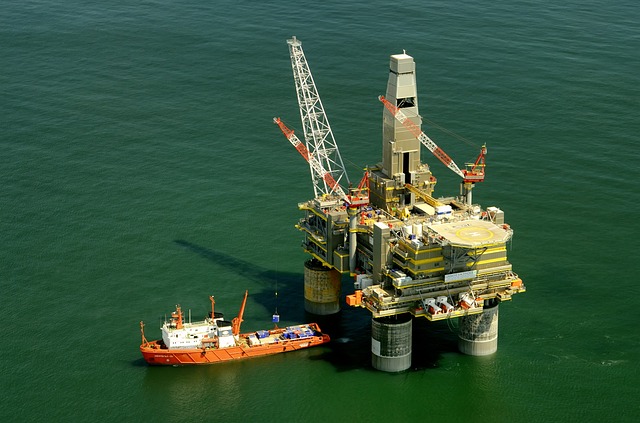
Last time, we looked at why fuel prices have (thankfully!) come back down from the record levels seen last summer. In Part Two, we’ll tackle a much trickier question…what’s coming next for fuel prices?
Let’s dive straight into four things that will be influencing your filling-up costs.
1. OPEC+
What OPEC (the Organisation of the Petroleum Exporting Countries) does really matters for the price at the pump. That’s because the thirteen countries in the association control 30% of the world’s petrol exports and 80% of its oil reserves.
Essentially, OPEC countries decide how much oil and petrol will be flowing from their facilities. When they think they’re not getting enough revenue, they close the taps a bit and wait for the price to go back up.
As if that wasn’t enough global power, there’s also OPEC+, a further ten oil-producing countries which join in with OPEC’s price-fixing controls.
In November, OPEC+ saw that the oil price was going down and cut their supply, hoping to force prices back up. On 3rd July, they cut supply again — and the two measures reduced global supply by 5%. And yet the international prices barely moved.
Why? Well, it’s partly because sources for oil outside of OPEC+ are stepping up supply and offsetting this. It’s also due to Chinese demand (see below).
Therefore, so far, OPEC+ shenanigans haven’t translated into higher pump prices – a good sign.
2. Saudi Arabia and Russia
Something else that might play into the petrol price mix is the relationship between two of the biggest players in OPEC+, Saudi Arabia and Russia. The two countries have cooperated in recent years, but the war in Ukraine has put the relationship under strain.
The issue is that the Saudis want higher oil prices to fund their own domestic plans. This means lowering oil production. However, at the moment, Russia needs to sell more oil to fund its flagging economy and its invasion. Because Russia has been forced to sell at bargain-basement prices, it is undercutting the OPEC+ agreement and flooding the international market with cheaper oil.
Could these cracks in the alliance get bigger still, lowering our UK fuel prices? The jury is out on that one.
For more on OPEC+, check out this great little explainer below.
3. The big Chinese slowdown
Another reason OPEC+ hasn’t been able to force prices up is because of what’s happening in China right now.
The basics of the complicated story go like this: for years, the building sector in China has been going bananas, with property developers borrowing in bigger and bigger amounts. The Chinese government could see that the bubble would eventuallly burst, so it created measures to cool things down.
However, building and property make up such a huge part of the Chinese economy that this is having more widespread effects. With a collapse in house prices, Chinese consumers aren’t buying very much. And on top of this, international demand for Chinese goods has recently slumped.
How does this affect the price of your fuel? Well, if China’s economy isn’t doing so well, then the country needs less oil to keep its industries and businesses going. That means more oil on the global market, which pushes down the price on our forecourts.
4. Those pesky retailers
Recently, you will have seen that UK supermarkets and other retailers stand accused of overcharging for fuel. The Competition and Markets Authority had a pretty blunt assessment:
- Retailers have been increasing their profit margins since 2019.
- Price leaders like Asda and Morrisons have effectively stopped trying to offer competitive deals.
- Other players have followed suit, keeping prices high.
- Some supermarkets used the ‘rocket up, feather down’ principle – raising prices fast when their costs rose, but only lowering prices slowly when costs fell again.
The upshot of these supermarket policies has been to keep fuel about 6p per litre more expensive than it should be. The supermarkets insist that they either had to keep their fuel prices higher or increase the price of their food even more.
Will the CMA’s intervention actually change anything? Quite possibly. For one thing, they have recommended a fuel finder scheme that makes it easier for drivers to compare prices. But more important than that is the effect of the CMA’s stinging criticism. No big brand wants to be accused of ripping off its customers and we can expect to see them scrambling to repair their reputation, perhaps by becoming more competitive.
Putting it altogether
There, we said in Part One that this would be complicated. How can we put all this together and make a prediction about fuel prices?
Our best guess is that fuel prices will stay steady or maybe even drop a bit over the next year, for three reasons.
- Unfortunately, the war in Ukraine looks set to drag on for months, meaning Russia has to keep its oil supplies high.
- China’s problems also don’t have any obvious quick fix, so there’s lower global demand for oil.
- The CMA’s criticism of fuel retailers could well bring back some much-needed competition.
This is also what well-known economic gurus The Daily Express are predicting, so we’re in good company. If we’re wrong, we’ll be commiserating right along with you.
And speaking of competitive prices…
Forgive the shameless plug, but don’t forget that WVS is the independent South Wales garage offering main dealer levels of service for your vehicle at competitive prices. We specialise in the VW group marques, including Audi, Volkswagen, Skoda and SEAT. WVS provides services, repairs and MOTs, delivering a main dealer level of care at affordable prices. To book your vehicle in, or for any enquiries, get in touch.
The WVS blog covers a wide range of automotive topics, from the contentious to the light-hearted.
